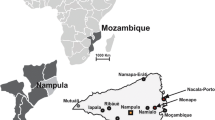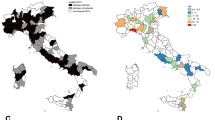Abstract
Past studies in Serbia have reported concurrent infections of Ixodes ricinus ticks with Borrelia burgdorferi sensu lato genospecies, Anaplasma phagocytophilum and Francisella tularensis. As a step forward, this investigation included a broader range of microorganisms and five most common and abundant tick species in Serbia. Five tick species were identified (Dermacentor marginatus, D. reticulatus, Haemaphysalis punctata, H. concinna and I. ricinus) and analyzed for the presence of seven pathogens. Anaplasma ovis, A. phagocytophilum, Babesia canis, B. burgdorferi s.l., Coxiella burnetii, Rickettsia helvetica and R. monacensis were detected. Sequencing of samples positive for F. tularensis revealed the presence of Francisella-like endosymbionts. No Bartonella spp. DNA was amplified. Concurrent infections were present in three tick species (D. reticulatus, H. concinna and I. ricinus). The rate of co-infections was highest in I. ricinus (20/27), while this tick species harbored the broadest range of co-infection combinations, with dual, triple and a quadruple infection(s) being detected.
Similar content being viewed by others
References
Alekseev AN, Dubinina HV, Jushkova OV (2004) First report on the coexistence and compatibility of seven tickborne pathogens in unfed adult Ixodes persulcatus Schulze (Acarina: Ixodidae). Int J Med Microbiol 293:104–108
Belongia EA (2002) Epidemiology and impact of coinfections acquired from Ixodes ticks. Vector Borne Zoonotic Dis 2:265–273
Brouqui P, Fournier PE, Raoult D (2001) Doxycycline and eradication of microfilaremia in patients with loiasis. Emerg Inf Dis 7(3):604–605
Chochlakis D, Ioannou I, Tselentis Y, Psaroulaki A (2010) Human anaplasmosis and anaplasma ovis variant. Emerg Inf Dis 16(6):1031–1032
Christova IS, Dumler JS (1999) Human granulocytic ehrlichiosis in Bulgaria. Am J Trop Med Hyg 60:58–61
Christova I, Schouls L, Van De Poul I, Park J, Panayotov P, Lefterova V, Kantardjiev T, Dumler JS (2001) High prevalence of granulocytic ehrlichiae and Borrelia burgdorferi sensu lato in Ixodes ricinus ticks from Bulgaria. J Clin Microbiol 39:4172–4174
Cinco M, Padovan D, Murgia R, Maroli M, Frusteri L, Heldtander M, Johansson KE, Engvall EO (1997) Coexistence of Ehrlichia phagocytophila and Borrelia burgdorferi sensu lato in Ixodes ricinus ticks from Italy as determined by 16S rRNA gene sequencing. J Clin Microbiol 35:3365–3366
De la Fuente J, Garcia–Garcia JC, Blouin EF, McEwen BR, Clawson D, Kocan KM (2001) Major surface protein 1a effects tick infection and transmission of Anaplasma marginale. Int J Parasitol 31:1705–1714
De la Fuente J, Atkinson MW, Naranjo V, Fernandez de Mera IG, Mangold AJ, Keating KA, Kocan KM (2007) Sequence analysis of the msp4 gene of Anaplasma ovis strains. Vet Microbiol 119:375–381
Đokić M, Ćurčić P, Nožić D et al (2006) Human ehrlichiosis. Vojnosanit Pregl 63:403–408 [in Serbian]
Dumler JS, Dotevall L, Gustafson R, Granstrom M (1997) A population-based seroepidemiologic study of human granulocytic ehrlichiosis and Lyme borreliosis on the west coast of Sweden. J Inf Dis 175:720–722
Estrada-Peña A, Jongejan F (1999) Ticks feeding on humans: a review of records on human-biting Ixodoidea with special reference to pathogen transmission. Exp Appl Acarol 23:685–715
Friedhoff KT (1997) Tick-borne diseases of sheep and goats caused by Babesia, Theileria or Anaplasma spp. Parasitologia 39:99–109
Ginsberg SH (2008) Potential effects of mixed infections in ticks on transmission dynamics of pathogens: comparative analysis of published records. Exp Appl Acarol 46:29–41
Goodman JL, Dennis DT, Sonenshine DE (2005) Tick-borne diseases of humans. Am Soc of Microbiology, Portland
Hubálek Z, Halouzka J (1997) Mosquitoes (Diptera: Culicidae), in contrast to ticks (Acari: Ixodidae), do not carry Francisella tularensis in a natural focus of tularemia in the Czech Republic. J Med Entomol 34:660–663
Jenkins A, Kristiansen BE, Allum AG, Aakre RK, Strand L, Kleveland EJ, van de Pol I, Schouls L (2001) Borrelia burgdorferi sensu lato and Ehrlichia spp. in Ixodes ticks from southern Norway. J Clin Microbiol 39:3666–3671
Junhui Z, Ruifu Y, Jianchun L, Songle Z, Meiling C, Fengxiang C, Hong C (1996) Detection of Francisella tularensis by the polymerase chain reaction. J Med Microbiol 45:477–482
Korenberg EI (2004) Problems in the study and prophylaxis of mixed infections transmitted by ixodid ticks. Int J Med Microbiol 293(suppl. 37):80–85
Kugeler K, Gurfield N, Creek J, Mahoney K, Versage J, Petersen J (2005) Discrimination between Francisella tularensis and Francisella-like endosymbionts when screening ticks by PCR. Appl Environ Microbiol 71(11):7594–7597
Kuttler KL (1984) Anaplasma infection in wild and domestic ruminants: a review. J Wildl Dis 20:12–20
Levin ML, Fish D (2000) Acquisition of coinfection and simultaneous transmission of Borrelia burgdorferi and Ehrlichia phagocytophila by Ixodes scapularis ticks. Infect Immun 68:2183–2186
Loubna D, Bitam I, Tahri M, Bensouilah M, de Meeûs T (2008) Competitive exclusion between piroplasmosis and anaplasmosis agents with cattle. PLoS Pathog 4:e7
Madariaga MG, Rezai K, Trenholme GM, Weistein RA (2003) Q fever: a biological weapon in your backyard. Lancet Infect Dis 3:709–721
Maurin M, Raoult D (1999) Q fever. Clin Microbiol Rev 12:518–553
Milutinović M, Masuzawa T, Tomanović S, Radulović Ž, Fukui T, Okamoto Y (2008) Borrelia burgdorferi sensu lato, Anaplasma phagocytophilum, Francisella tularensis and their co-infections in host-seeking Ixodes ricinus ticks collected in Serbia. Exp Appl Acarol 45:171–183
Pavlović I, Milutinović M, Petković D, Terzin D, Terzin V (2002) Epizootiological research of Canine Babesiosis in the Belgrade district. J Protozool Res 12:10–15
Pomerancev BL (1950) Fauna SSSR. Paukoobrazovanie. Iksodovie klešćei (Ixodidae). Izd Akadem Nauk SSSR 4(2):2–15
Psaroulaki A, Chochlakis D, Sandalakis V, Vranakis I, Ioannou I, Tselentis Y (2009) Phylogentic analysis of Anaplasma ovis strains isolated from sheep and goats using groEL and mps4 genes. Vet Microbiol 138(3–4):394–400
Radulović Ž, Choclakis D, Tomanović S, Milutinović M, Tselentis Y, Psaroulaki A (2010) First detection of spotted fever group rickettsiae in ticks in Serbia. Vector-Borne Zoonotic Dis 11(2):111–115
Raoult D, Roblot F, Rolain JM, Besnier JM, Loulergue J, Bastides F, Choutet P (2006) First isolation of Bartonella alsatica from a valve of a patient with endocarditis. J Clin Microbiol 44(1):278–279
Roux V, Raoult D (1999) Body lice as tools for diagnosis and surveillance of reemerging diseases. J Clin Microbiol 37(3):596–599
Rymaszewska A (2008) Divergence within the marker region of the groESL operon in Anaplasma phagocytophilum. Eur J Clin Microbiol Infect Dis 27(11):1025–1036
Santino I, Cammarata E, Franco S, Galdiero F, Oliva B, Sessa R, Cipriani P, Tempera G, Del Piano M (2004) Multicentric study of seroprevalence of Borrelia burgdorferi and Anaplasma phagocytophila in high-risk groups in regions of central and southern Italy. Int J Immunopathol Pharmacol 17:219–223
Scoles G (2004) Phylogenetic analysis of the Francisella-like endosymbionts of Dermacentor ticks. J Med Entomol 41:277–286
Sonenshine DE (1991) Biology of ticks, vol 1. Oxford University Press, Oxford
Spyridaki I, Gikas A, Kofteridis D, Psaroulaki A, Tselentis Y (1998) Q fever in the Greek Island of Crete: detection, isolation, and molecular identification of eight strains of Coxiella burnetii from clinical Samples. J Clin Microbiol 36(7):2063–2067
Stańczak J, Gabre RM, Kruminis-Lozowska W, Racewicz M, Kubica-Biernat B (2004) Ixodes ricinus as a vector of Borrelia burgdorferi sensu lato, Anaplasma phagocytophilum and Babesia microti in urban and suburban forests. Ann Agric Environ Med 11:109–114
Steere AC, Damle N, Sikand VK (2003) Coinfection in patients with Lyme disease: how big a risk? Reply. Clin Infect Dis 37:1278–1279
Swanson SJ, Neitzel D, Reed KD, Belongia EA (2006) Coinfections acquired from ixodes ticks. Clin Microbiol Rev 19(4):708–727
Theodoropoulos G, Gazouli M, Ikonomopoulos JA, Kantzoura V, Kominakis A (2006) Determination of prevalence and risk factors of infection with Babesia in small ruminants from Greece by polymerase chain reaction amplification. Vet Parasitol 135:99–104
Thompson C, Spielman A, Krause PJ (2001) Coinfection of deer-associated zoonoses: Lyme disease, babesiosis and ehrlichiosis. Clin Infect Dis 33:676–685
Tomanović S, Radulović Ž, Masuzawa T, Milutinović M (2010) Coexistence of emerging bacterial pathogens in Ixodes ricinus ticks in Serbia. Parasite 17:211–217
Tomasiewicz K, Tomasiewicz R, Modrzewska A, Buczek A, Stanczak J, Maciukajc J (2004) The risk of exposure to Anaplasma phagocytophilum infection in mid-eastern Poland. Ann Agric Environ Med 11:261–264
Vorou RM, Papavassiliou VG, Tsiodras S (2007) Emerging zoonoses and vector-borne infections affecting humans in Europe. Epidemiol Infect 135:1231–1247
Acknowledgments
This work was supported by a grant from the Ministry of Education and Science, Republic of Serbia (Project No. 173006) and by Sixth Framework Programme for Research and Technological Development of European Union (FP6-INCO-CT-2006-043702-SERBPARZOON).
Author information
Authors and Affiliations
Corresponding author
Rights and permissions
About this article
Cite this article
Tomanović, S., Chochlakis, D., Radulović, Ž. et al. Analysis of pathogen co-occurrence in host-seeking adult hard ticks from Serbia. Exp Appl Acarol 59, 367–376 (2013). https://doi.org/10.1007/s10493-012-9597-y
Received:
Accepted:
Published:
Issue Date:
DOI: https://doi.org/10.1007/s10493-012-9597-y




